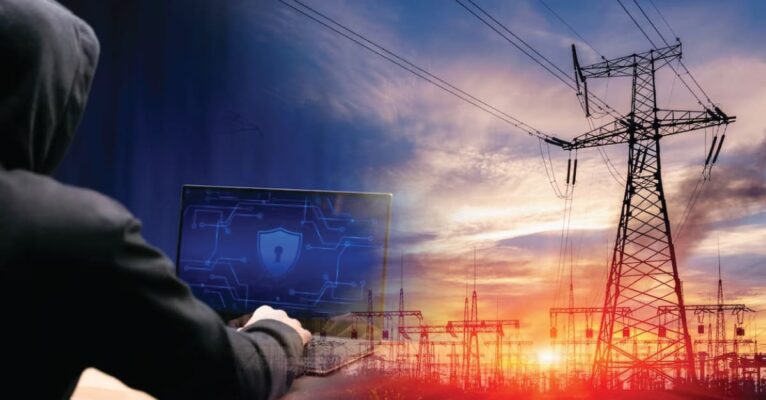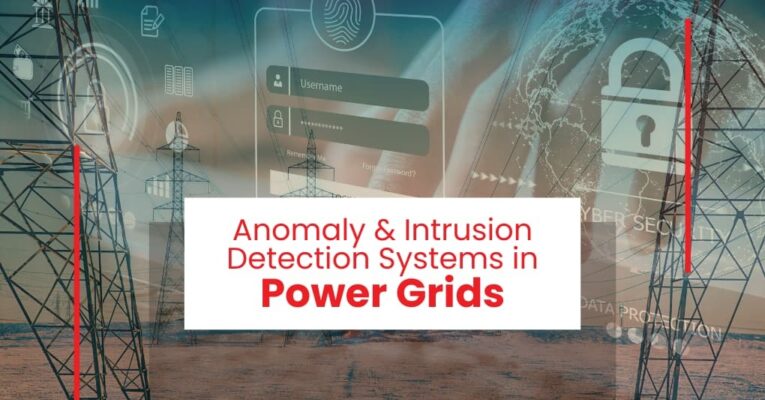Electricity is the lifeblood of modern society and the economy, and any disruption to the power grid can bring daily life to a standstill. In recent years, cybersecurity threats have been evolving and accelerating as technologies advance, as evidenced by the International Energy Agency, which revealed a staggering doubling in weekly cyberattacks against utilities worldwide, between 2020 and 2022. There were 1,101 attacks registered weekly last year.
The reverberations of such cyberattacks became starkly evident in 2021 when the U.S. Colonial Pipeline fell victim to a ransomware attack, causing substantial disruptions to the nation’s energy supplies for weeks. Subsequently, amidst Russia’s invasion of Ukraine in 2022, cyberattacks targeted Ukraine’s electrical grid and energy infrastructure, resulting in significant power outages and data theft from Ukrainian power companies. These threats then expanded to European energy companies, further emphasizing the importance of energy sectors in national security and the urgency for robust cybersecurity best practices.
The Need to Fortify the American Power Grid
The U.S. energy sector grapples with multifaceted cyber threats from nation-states, cybercriminals, hacktivists, and insiders. Major cyber incidents targeting operational technology can lead to data breaches, financial losses, disruption of energy delivery, and physical impacts. That’s not all, the vulnerabilities exposed by the Colonial Pipeline attack extended beyond fuel distribution, revealing potential risks to the electrical grid.
With interconnected digital systems integral to critical infrastructure like pipelines, the potential impact of similar cyber vulnerabilities in the more complex and interconnected electrical grid poses severe economic and societal threats. This is because attackers can target smaller, more vulnerable operators, causing cascading failures that impact entire grids due to the reliance on precise power frequencies. Therefore, facilitating cybersecurity best practices for all grid participants, including smaller operators and distributed energy providers, is crucial for genuine resilience.
Efforts to bolster defenses are already underway, evident in stress-testing emergency response and recovery plans, exercises such as GridEx, and calls for improved standards and workforce training. However, evolving cyber threats persist, guided by geopolitical events, technological changes, and audacious hackers.
Addressing the multifaceted threat of cyberattacks, utility companies and regulatory bodies are actively redefining standards, procedures, and protocols. Establishing cybersecurity best practices such as electronic security perimeters and categorizing mission-critical electric control center communications systems as Bulk Electric System (BES) cybersystems are steps in the right direction.
Essential Cybersecurity Best Practices For Your Power Grid
Today, power utilities find themselves at the forefront of various cybersecurity challenges. As technology advances, so do the threats to the reliability and resilience of the electric grid. To navigate this complex terrain, it is crucial for utilities to adopt comprehensive cybersecurity best practices.
Here are a few preventive cybersecurity measures designed to fortify defenses, respond effectively to incidents, and ensure ongoing preparedness.
1. Implement Intrusion Detection
In the face of increasingly sophisticated cyber threats, utilities must deploy intrusion prevention and detection systems. These systems encompass traffic and packet monitoring, well-defined firewalls, port scanning, and comprehensive system logs and alerts. A dedicated information security operations center (ISOC) staffed by experts is essential for monitoring, assessing, and defending systems and assets against both internal and external threats.
GRIDsentry’s G-Detect is a tool that conducts deep packet inspection of messages within digital substations, operating in real-time and offline modes and enabling online intrusion detection and forensic analysis. This cutting-edge system leverages AI/ML techniques and historical datasets to provide a comprehensive analysis of the incident.
2. Establish a Dedicated Security Protocols Team
Empower your workforce as the first line of defense by ensuring they understand cybersecurity policies and procedures. Regularly educate employees on handling emails, accessing data, and safeguarding information on various devices.
G-Team by GRIDsentry is a dedicated task force providing 24/7 incident response. Our services encompass developing tailored Incident Response Plans (IRPs) for specific locations, providing training to Internal Incident Response Teams (IRT) for plan execution, and assisting in immediate mitigation during an attack when existing security measures have proved insufficient. Additionally, we conduct forensic analysis of archived network data to proactively prevent future occurrences.
3. Conduct Periodic System Security Audits
Keep security protocols updated against evolving threats by conducting frequent security audits, examining data and network security to identify and address vulnerabilities. For utility companies, more frequent audits may be necessary. G-Audit offers AI-powered risk assessment solutions that can reduce turnaround time and increase the accuracy of risk score reports, along with standard compliance, vulnerability assessment, and fully-automated vulnerability reports.
4. Create Data Backups & Recovery Plans
Prevent risks by backing up critical data and devising a recovery plan. Storing data in the cloud ensures accessibility even in the event of data theft or ransomware attacks, facilitating quicker threat mitigation and reducing downtime.
5. Protect Physical Utility Infrastructure
Guard against attacks targeting physical infrastructure such as power grids by implementing robust access control measures, including fob or key card requirements, alongside surveillance cameras and sensors to detect unauthorized access. You can rely on tools such as G-Discover to automate asset discovery as well as identify and monitor unauthorized additions of assets to your network.
6. Strengthen Passwords & Bolster Management
Enhance security by creating strong passwords using password generators that are longer than 12 characters, incorporating letters, numbers, and special characters. You can also consider adopting password manager tools to securely manage and share passwords across teams.
7. Follow Established Security Frameworks
Leverage existing frameworks such as NIST’s comprehensive cybersecurity framework or the Cybersecurity Capability Maturity Model (C2M2) by the Office of Cybersecurity, Energy Security, and Emergency Response. These frameworks offer structured guidance for enhancing security capabilities in utilities.
In conclusion, safeguarding the integrity of our electric grid against cyber threats demands a comprehensive and proactive approach from power utilities. By adopting these cybersecurity best practices, utilities not only fortify their systems but also protect their brand, public perception, and shareholder value.
To assist you in your pursuit of cybersecurity, GRIDsentry offers a suite of advanced solutions that are designed to be simple and effective, including intrusion protection and detection, defensive deception technology, as well as AI/ML techniques. To know more, reach out to us today.


